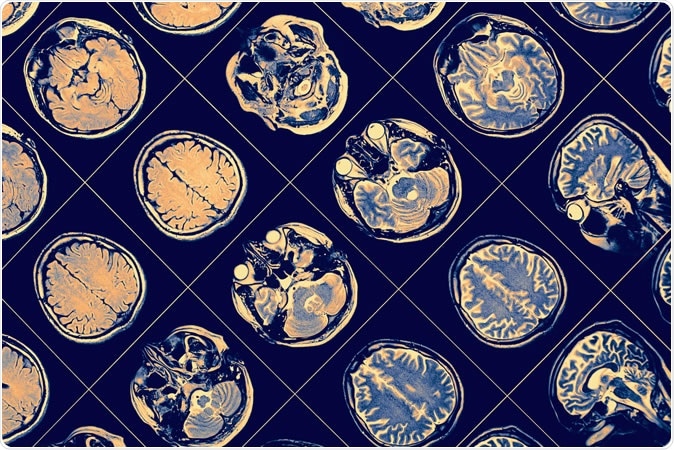
MPST gene expression (which leads to hydrogen sulphide production) was higher in postmortem brains from people with schizophrenia than in those from unaffected people. MPST protein levels in these brains also correlated well with the severity of premortem symptoms.
Researchers from the RIKEN Center for Brain Science in Japan have found certain chemical markers that are associated with schizophrenia. They worked with lab mice with models of schizophrenia as well as post mortem brain specimens of persons with schizophrenia. The study titled, “Excess hydrogen sulfide and polysulfides production underlies a schizophrenia pathophysiology,” was published in the latest issue of the journal EMBO Molecular Medicine.
They explained that persons with schizophrenia tend to have a higher level of an enzyme that produced hydrogen sulphide within the brain. Detection of the sulphides or the enzyme levels could also work as a diagnostic test for schizophrenia they added. At present there are few definitive tests to confirm schizophrenia and almost no biomarkers for the disease. The authors of the study wrote that for the past three decades it has been known that persons with the condition have an abnormal startle response to loud noises. They explained that a normal person does not startle as much as a person with schizophrenia with a small burst of noise preceded a burst of noise.
The first smaller sound is called the prepulse. In normal persons the prepulse causes inhibition of the startle response seen with the loud sound and is thus called a PPI or prepulse inhibition. Persons with schizophrenia have a lowered PPI. This means that even after the prepulse, they startle the same as without the prepulse. It is known as behavioural marker that could help diagnose schizophrenia. Authors added that the basis for this response among schizophrenics, however, is unknown.
For this new study the team at RIKEN CBS included lab mice that were genetically modified to show extremely high or low PPI. Those with low PPI were supposed to mimic persons with schizophrenia. Then they looked at the differences in the expressions of the proteins in their brains that coded for certain enzymes.
Results revealed that Mpst enzyme was found in higher levels in mice with low PPI compared to mice with high PPI. This enzyme also produces more hydrogen sulphide explained the researchers. As a next step they analyzed the levels of hydrogen sulphide in the brains of mice with low and high PPI. Results revealed that mice with low prepulse inhibition that mimicked schizophrenia had higher levels of hydrogen sulphide in their brains.
Lead author, Takeo Toshikawa explained, “Nobody has ever thought about a causal link between hydrogen sulfide and schizophrenia. Once we discovered this, we had to figure out how it happens and if these findings in mice would hold true for people with schizophrenia.”
To confirm their hypothesis, the team then prepared mice strains that were genetically modified so that they had low PPI and did not have the Pmst coding gene. This meant that they did not have the Mpst enzyme. These low PPI mice with no Mpst enzyme were found to have a higher PPI compared to low PPI mice that possessed the Mpst enzyme, the team found. This meant that the enzyme played an important role in PPI and consequently schizophrenia, the team concluded. When the levels of the enzyme fell, the mice became more normal or non-schizophrenic.
To corroborate their findings in humans, the team next looked at the genetic expression of the MPST gene in the post mortem brains of persons with schizophrenia and compared them with brains of people who did not have schizophrenia. They noted that the expression of the MPST gene was higher among those with schizophrenia compared to those without. Further those with more severe disease also had a greater expression of the gene, they found.
As a next step the team collected hair follicle samples from over 150 individuals who were living with schizophrenia. Even here they noted that those with schizophrenia had higher levels of expression of MPST mRNA compared to persons who did not have schizophrenia. The authors of the study warned that not all cases showed rise in sulphide levels in their brains but MPST levels at present could be a fair enough biomarker for schizophrenia before the symptoms of the disease become evident.
The researchers then looked at the environmental factors that could contribute to increased levels of MPST and sulphides in the brains of persons with schizophrenia. They explained that hydrogen sulphide within the brain normally protects against inflammatory stress and inflammation early could contribute to schizophrenia later in life.
Yoshikawa explained, “We found that anti-oxidative markers--including the production of hydrogen sulfide--that compensate against oxidative stress and neuroinflammation during brain development were correlated with MPST levels in the brains of people with schizophrenia.” He said that once there was neurological inflammation, the hydrogen sulphide production in the brain is primed for life and there are genetic changes that lead to “sulphide stress” and this leads to development of features of schizophrenia.
Yoshikawa added that presently the drugs for treatment of schizophrenia deal with dopamine and serotonin alone and no new drug research has shown promise. He said, “A new paradigm is needed for the development of novel drugs. Currently, about 30% of patients with schizophrenia are resistant to dopamine D2-receptor antagonist therapy. Our results provide a new principle or paradigm for designing drugs, and we are currently testing whether inhibiting the synthesis of hydrogen sulfide can alleviate symptoms in mouse models of schizophrenia.”
Journal reference:
Excess hydrogen sulfide and polysulfides production underlies a schizophrenia pathophysiology, EMBO Mol Med (2019), https://www.embopress.org/doi/full/10.15252/emmm.201910695






No comments
Post a Comment